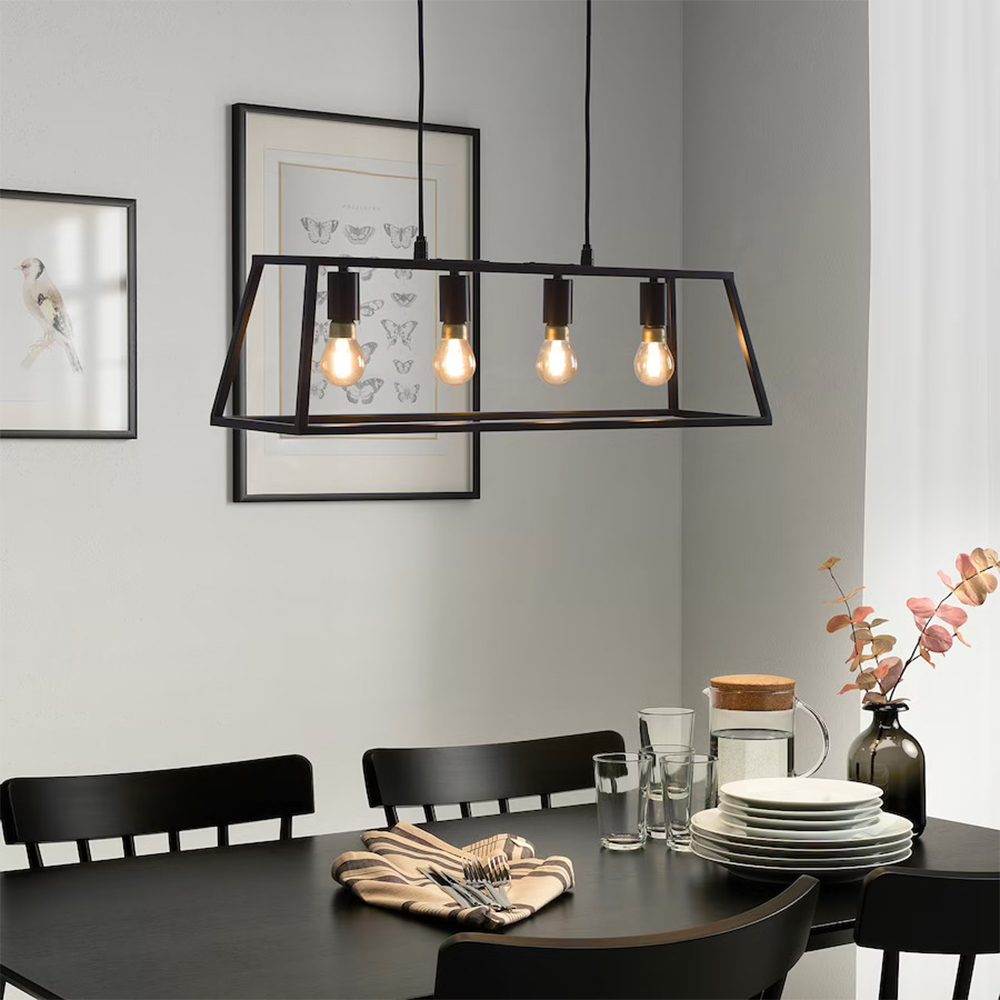
Buying a Kitchen Light Fixture
No one wants a poorly lit countertop or island when wielding sharp knives! Kitchen lighting is important for creating a welcoming ambiance and making cooking tasks safer.
Besides finding a style that fits your aesthetic, there are other things to consider, including:
- Type: Do you need a flush-mount ceiling light, recessed lighting, track lighting and/or task lighting such as pendants? Your best bet is to layer your lighting to reduce dark spots and shadows. Jennifer Johnson, CEO of The Light Center, says you should always think about what kind of light you need to complete the tasks at hand. She loves under-cabinet lighting for food prep and recommends recessed lighting for general overall light.
- Ceiling height: Lower ceilings usually work best with flush-mount or recessed kitchen light fixtures. Higher or vaulted ceilings can also accommodate chandeliers, longer pendants and semi-flush-mount fixtures.
- Maintenance and materials: These go hand-in-hand. Johnson recommends “easy-wipe surfaces” such as flat metal or smooth glass. Anything textured will be harder to clean. Fabric drum lights or paper shades can be hard to keep grease-free and won’t repel a messy splash as well as nonporous materials.
- Cost: Light fixtures range from the super-budget-friendly to the stratosphere. Johnson says the lowest priced, quality pendant will probably cost at least $100 to $200 each. All lighting costs vary based on materials, design and brand.
- Installation Homeowners with some experience can successfully install home lighting, Johnson says. If you’d rather hire a pro to do it, someone with general handy skills will run you $40 to $60 an hour, while a licensed electrician charges $100 to $180 an hour. As with anything, hiring a licensed pro will get you more knowledge and expertise. Sometimes lighting stores have pros on staff or ones they recommend, so ask if you’re not sure.
- Surfaces and glare: Your countertops, paint finishes and other surfaces will react with whatever lights you choose. Black soapstone will soak up some of the light, Johnson says, whereas polished quartz will reflect and bounce the light back up at you, potentially creating glare. Your eye may have trouble transitioning between the glare and a chef’s knife in your hand, especially as you age. Frosted or etched glass, or lenses on the lights, help diffuse light and cut glare.
Note: Lighting experts generally recommend installing dimmer switches on all light fixtures wherever possible.
Did you miss our previous article...
https://rsssuperfeeds.com/life-hacks/8-best-miter-saws






